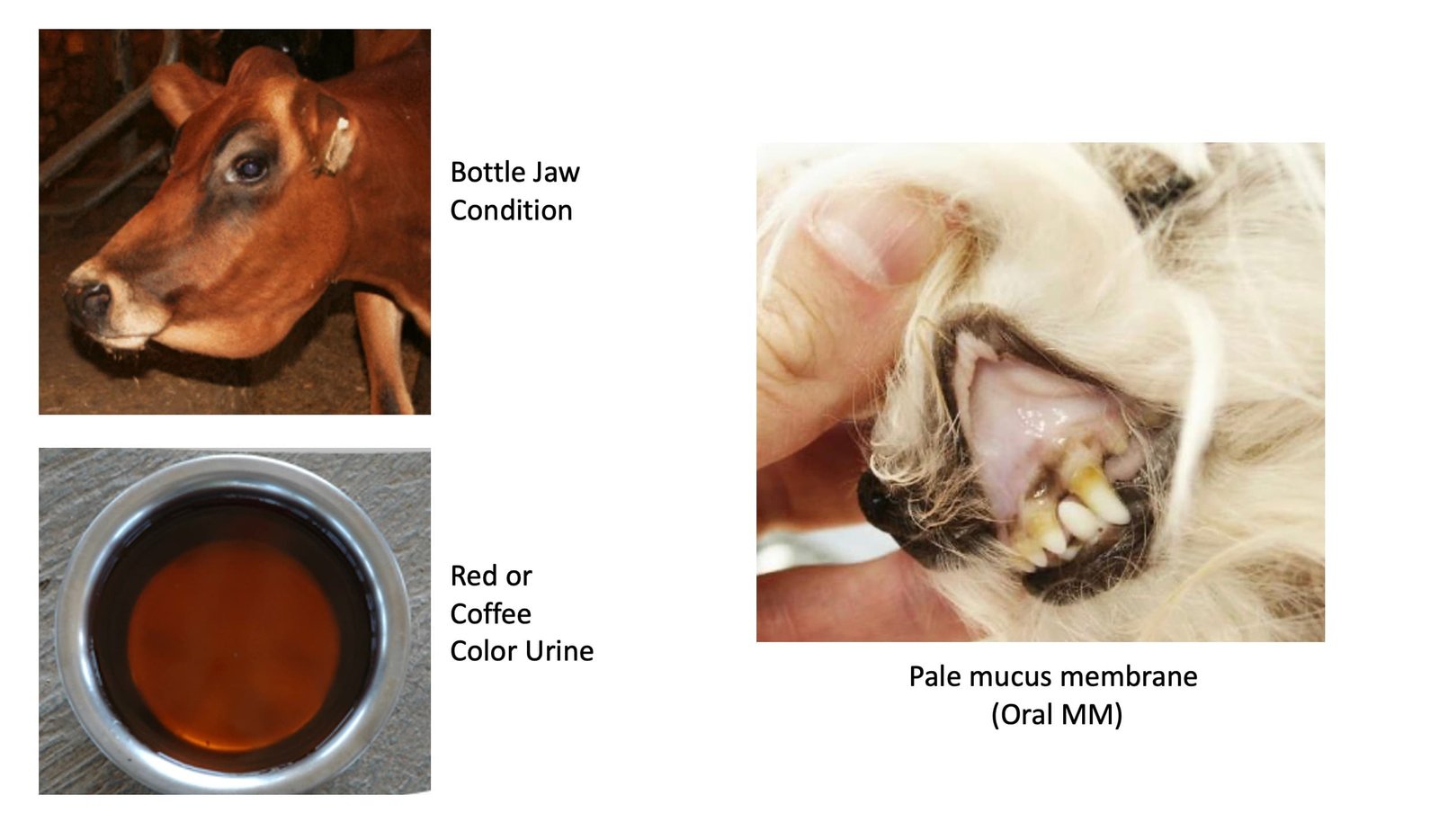TABLE OF CONTENTS
Symptoms of various diseases in Animals
Symptoms of various diseases in animals are described here. Animals like dogs, cats, large animals, etc. exhibit various symptoms in disease conditions, and these are used to reach a confirmative diagnosis and treatment.
Symptomatology is a science which deals with the symptoms of various diseases.
A symptom is any evidence that indicates the presence of the disease. It denotes adverse feelings by the animals due to a diseased process. In human medicine the abnormal sensations or feelings are expressed by the patient which is out of question in veterinary medicine.
Sign is outward manifestation of a disease observed through objective evidence. It is observed by veterinary clinician, animal attendants or the others.
Examples of Symptoms of various diseases in animals:
- Bottle jaw condition could be seen in Hypoproteinemia due to internal parasites
- Red urine could be seen in haemoglobinuria condition
- Loose stools seen in enteritis affected animals
- Pale mucus membrane seen in anaemia due to nutritional deficiency or infectious diseases

Classification of Symptoms
Symptoms can be classified into:
- Subjective symptoms
- Objective symptoms
- Premonitory or precautionary symptoms
- Direct or idiopathic symptoms
- Indirect or sympathetic symptoms
- Typical Symptoms
- Atypical symptoms
- Periodical or remittent symptoms
- Diagnostic or pathogenic or pathognomonic symptoms
- Prognostic symptoms
Subjective symptoms
Subjective symptoms are perceptible to the patient only. It indicates feelings expressed by the patient. This has got relevance in human medicine. where patient voluntarily express his difficulty to the clinician. Actual location of pain in any organ can be obtained through interrogation of a human patient but this is beyond scope of animal practice.
But in veterinary medicine also there are few examples of subjective symptoms. For example, horse kicks at the flank to express the abdominal pain and kicking at the belly is a sign of colic in cattle.
Objective symptoms
Objective symptoms are those that are perceptible or obvious to the senses of the observer. These objective symptoms are called clinical signs in veterinary practice. For example, Fluid thrills in ascites and Doughy rumen in ruminal infection.
Premonitory or precautionary symptoms
Premonitory or precautionary symptoms are observed before onset of the disease and serves as forewarning. For examples-
- Epilepsy: Sitting in a corner, not responding to the owner, these are premonitory signs or prodromal stage of seizure
- Feeling of chill before onset of fever
Direct or idiopathic symptoms
Direct or idiopathic symptoms indicate direct disease process and sometimes indicate the affection of a specific organ. For example, Mucous and blood accompanied with tenesmus in dysentery condition.
Indirect or sympathetic symptoms
Indirect or sympathetic symptoms are symptoms associated with any remote organs. For example, vomiting due to hepatitis in dogs.
Typical Symptoms
Typical Symptoms which are very much characteristics of a disease. Clinician may distinguish the disease from its typical manifestation. This is also named as diagnostic symptom.
Examples of Typical symptoms are:
- Black Quarter disease: Swelling with crepitation in heavy muscle
- Haemorrhagic Septicaemia: Swelling in throat region accompanied with dyspnea
- Scistosomiasis: Snoring
- Recurrent laryngeal nerve paralysis: Whistling or roaring sound
- Marecks disease: Athletic posture
Atypical symptoms
Symptoms which are irregular and bear any conformity of typical symptoms are called Atypical symptoms. Eg: nervous manifestation of calf suffering from coccidiosis.
Periodical or remittent symptoms
Symptoms which entirely disappear and reappear after a short or long period are called Periodical or remittent symptoms.
Examples of Periodical or remittent symptoms are:
- Diphasic fever in canine distemper
- Fever in surra (trypanosomiasis)
- Undulating fever in human brucellosis
Diagnostic or pathogenic or pathognomonic symptoms
Symptoms which points directly and definitely to a particular disease and afford a distinct basis for diagnosis. This may also be considered as characteristics symptom.
Examples of Diagnostic or pathogenic symptoms are:
Prognostic symptoms
Those symptoms which frame a basis to the clinician to determine the course of termination of a disease. The fate (prognosis) of a disease following a therapy may also be assessed.
Examples of Prognostic symptoms are:
- High blood urea nitrogen in nephritis indicates ensuring death
- Sudden relief of pain after sever colic in horse indicates symptoms of some organs

